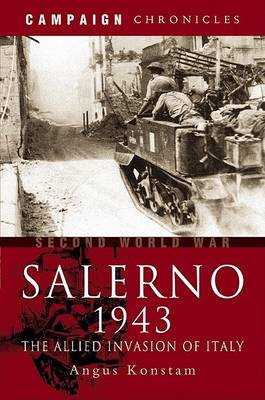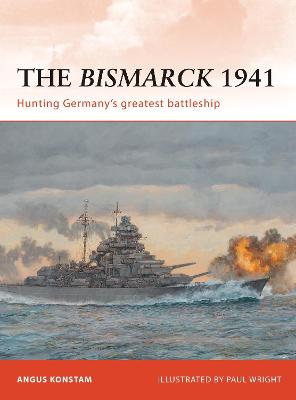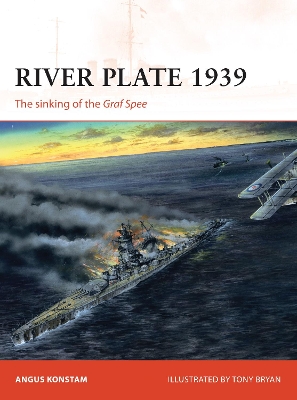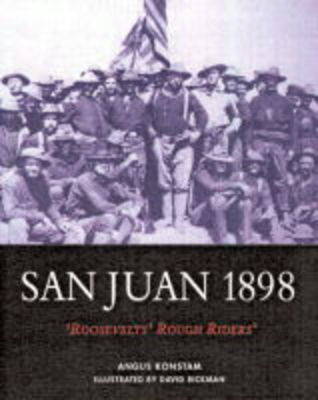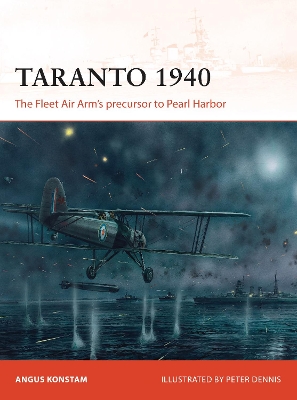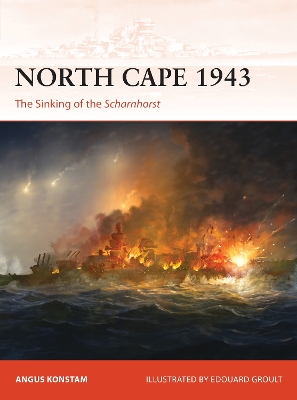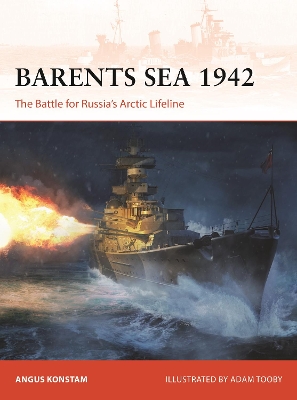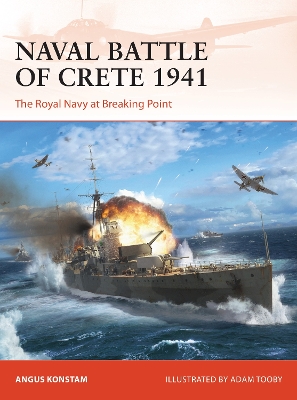Campaign
9 total works
Featuring full colour artwork, archive photographs and meticulous research, this comprehensive volume explores the thrilling story behind the Battle of the River Plate, an engagement that unquestionably demonstrated the effectiveness of British seapower and diplomacy on an international stage.
When Tirpitz was put out of action, and Hitler demanded naval support for the war in Russia, the crew of the Scharnhorst under Rear-Admiral Bey, had to act. In late December 1943, she put to sea, her target an Allied convoy passing through the Barents Sea on its way to Murmansk. Unknown to Bey, the British were using the convoy as bait to draw the Scharnhorst into battle. What followed was a two-day running battle fought in rough seas and near-perpetual darkness, ending with the destruction of the Scharnhorst and all but 36 of her crew, ending any serious German naval threat to the Arctic convoy lifeline.
In this illustrated study, leading naval historian Angus Konstam offers a fascinating new insight into this key engagement. He combines expert analysis with his unique knack for storytelling to offer a fascinating new perspective on the battle which sank the Scharnhorst.
The Arctic convoys that passed through the cold, dangerous waters of the Barents Sea formed a vital lifeline – a strategic link in tanks, supplies and above all goodwill between the Western Allies and the Soviet Union. In December 1942, under Operation Regenbogen (Rainbow), the German Kriegsmarine sought to strike a crippling blow on the Arctic convoys and finally sever this all-important sea route. In this fascinating work, renowned naval expert Angus Konstam documents the fate of the Allied Convoy JW 51B as it came under attack from some of the Kriegsmarine’s most powerful surface warships – a pocket battleship, a heavy cruiser and six destroyers. Illustrated with stunning battlescene artworks, maps, 3D diagrams and photographs, it explores the David and Goliath struggle between the Allied ships defending the convoy and the powerful German force, until the arrival of the two British cruisers tipped the balance of power. The Battle of the Barents Sea, fought amid snowstorms and the darkness of the Arctic night, would prove to be a turning point in the hard-fought war in northern waters, and would test Hitler's patience with his surface fleet to the limit.
In April 1941, following the Axis invasion of Greece, the British Mediterranean Fleet was ordered to evacuate Allied survivors, many of which were taken to Crete. The Luftwaffe established itself in airfields on the Greek mainland, and formed plans to invade Crete by air and sea, under the cover of 500 fighters and bombers of the Luftwaffe’s Fliegerkorps VIII. Facing them were a small and scattered garrison on the island, a handful of under-strength RAF squadrons and the hard-pressed warships of the Mediterranean Fleet. What happened next was a costly, but ultimately inspiring, naval battle, in which Royal Navy crews were placed under intense strain.
Using period photographs, stunning battlescene artworks, detailed maps and an authoritative narrative, world-leading maritime historian Angus Konstam tells the fascinating story of how Allied ships failed to repulse the Axis invasion convoys bound for Crete, before successfully evacuating troops from the island, all the while under relentless Luftwaffe attack. Offering a fresh insight into this strategically important battle, this work shows how it marked a turning point in the naval war for the Mediterranean, and also witnessed the first use of new elements in naval warfare: the mass use of aircraft to contest control of the sea, and the use of Ultra intelligence to forestall the Axis invasion of Crete. Despite a heavy butcher’s bill of dozens of Royal Navy ships lost and damaged, and hundreds Luftwaffe aircraft destroyed, the Royal Navy Mediterranean Fleet would live to fight another day.
